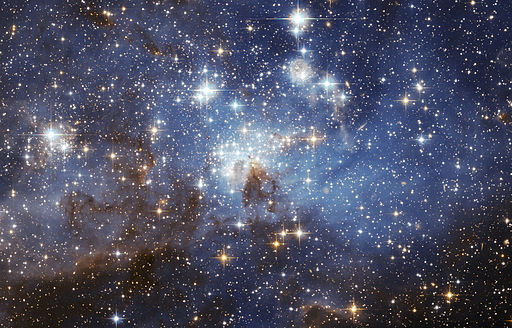University of Maryland researchers will use a newly built robotic camera to study areas from black holes to asteroids, among other astronomy topics, starting this February.
The Zwicky Transient Facility, a camera mounted on a telescope installed in November at the California Institute of Technology’s Palomar Observatory, will begin taking images of the sky next month. A research partnership between the astronomy and physics departments at this university and NASA’s Goddard Space Flight Center allows students and faculty to have access and full data rights to the Zwicky Transient Facility survey.
For the next three years, the facility will be the flagship project for a full sky survey being done by NASA and the university. By scanning more than 3,750 square degrees an hour, the robotic camera can capture thousands of objects in space. One image taken by the camera is equivalent in size to 247 full moons, and it will only take three nights for the camera to capture the entire night sky.
[Read more: An $8 million grant will help UMD researchers study hearing loss]
Before this current technology, this university was involved with the intermediate Palomar Transient Factory, another robotic camera that takes images of the sky. However, it has fewer capabilities than Zwicky Transient Facility.
At least a dozen faculty, staff and graduate students from different disciplines across this university with varying research topics will use the data provided by the survey, Andrew Harris, this university’s astronomy department chair, said.
Suvi Gezari, an astronomy professor at this university and a Joint Space-Science Institute fellow, is one of these researchers.
“It’s been really exciting to be part of such an important stepping stone towards the next generation of surveys,” said Gezari, whose research mainly focuses on how astronomical objects change with time.
“For my research specifically, I’m used to only seeing one or two tidal disruption events per year, but to do meaningful statistics you need a much bigger number,” Gezari said, “and [Zwicky Transient Facility] is predicted to record 30 events per year, which is amazing for my research.”
[Read more: UMD researchers helped create a molecule that could lead to a vaccine for HIV]
The 12 students in Gezari’s ASTR498S: Special Problems in Astronomy; “Big Data” Surveys class during the spring semester can choose to use the data for a class project — and if they do so, they will be some of the first students to view and analyze the data at the university.
“They will be using [Zwicky Transient Facility] data in the very beginning of the survey and because of this I am hoping the work students do will be fed back to scientists working directly with [Zwicky Transient Facility],” Gezari said.
Alison Duck, a junior astronomy and physics major, is one of the students in the class and is very excited to get a chance to use the facility data.
“When I heard about this class I thought it was the most exciting thing ever to get to do black hole research as a junior with the newest data available,” said Duck, who previously took a class that used research from Zwicky Transient Facility’s predecessor, the intermediate Palomar Transient Factory.
The Solar System Small Bodies Group — part of this university’s astronomy department — will also use Zwicky Transient Facility data to study asteroids and comets, Harris said. The group represents the largest collection of cometary scientists in the country, according to the department’s website.
“Maryland is really awesome at having everything so I’ve been able to explore tons of different things from exoplanets to now black holes,” Duck said. “Just the amount of resources and intellectual power here is really exciting — it’s awesome that students can be involved in cutting edge stuff like the [Zwicky Transient Facility] survey.”



